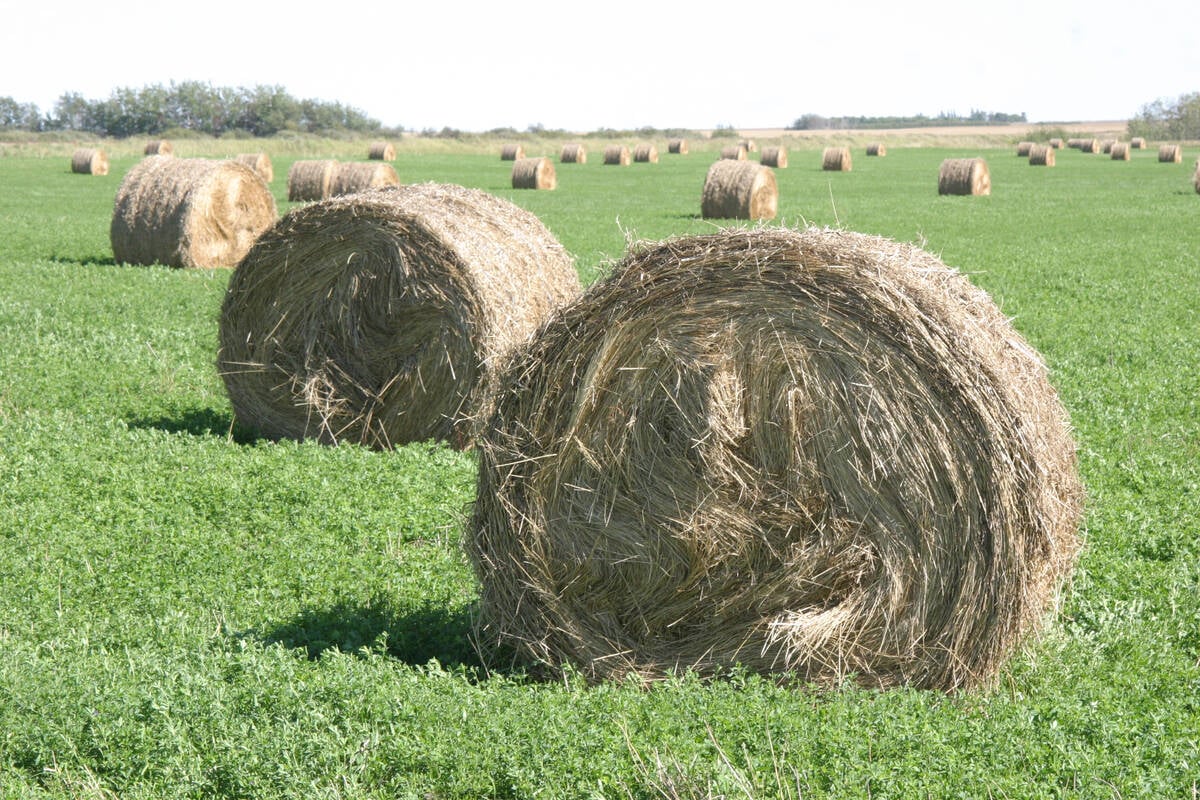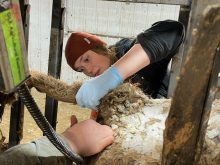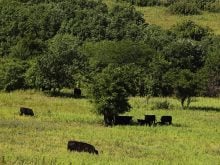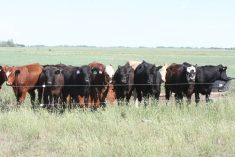It’s approaching the time of year when most beef calves in Western Canada are weaned and sold.
Many calves travel to feed yards via auction markets and one of the major disease risks associated with the stresses of weaning, mixing and transportation is the syndrome known as bovine respiratory disease.
BRD is the most common reason for administering antimicrobial drugs to cattle and is probably one of the most important economic diseases of beef cattle in North America. As a result, it has probably become one of the most researched disease syndromes of beef cattle.
Read Also

Breaking down successful winter feeding into six steps
It’s that time of year when it is important to start planning for a cow herd’s winter feeding program. Here are six steps I think are necessary to consider when getting your feed tested.
Despite the vast amount of research, we still don’t completely understand this complex disease. We understand that stressors such as weaning, transportation, commingling and weather are important risk factors that can make the animal more likely to become sick with respiratory disease.
We know there is a combination of different viral and bacterial pathogens that can take advantage when these stressors occur and cause respiratory disease. However, most of these viral and bacterial pathogens are what we call opportunistic pathogens. Many times, we can culture these bacteria and viruses from normal animals and from animals suffering from respiratory disease.
In the past, we have tended to focus on a subset of bacteria such as Pasteurella multocida, Mannheimia hemolytica, Histophilus somnus and Mycoplasma bovis as some of the most important bacterial “causes” of respiratory disease.
However, over the last decade, new diagnostic tools have developed that allow us to evaluate the entire respiratory microbiome rather than just trying to identify one or two specific bacteria of interest.
In simple terms, the microbiome is the entire community or population of micro-organisms that exists in a particular environment. In this case, we are interested in all the various fungi, bacteria and viruses that exist in the respiratory tract of calves at and around the time of weaning.
We want to understand more about this complex community of micro-organisms rather than focusing on only the three or four bacteria that we think ultimately cause disease.
The microbiome can be changed by a host of factors, including age, antimicrobial use, management strategies, diet and even stressors such as transportation or commingling.
The current thinking by researchers is that shifts or changes in the microbiome population in the respiratory tract may actually allow some of these bacteria such as Mannheimia hemolytica or Pasteurella multocida to multiply, become dominant and cause disease.
A recent study published in the journal Frontiers in Microbiology published by researchers from West Texas A&M University explores the microbiome of auction market calves and evaluated whether the vaccine strategy at arrival at the feedlot affected the respiratory microbiome.
The researchers randomized 525 auction-market-derived calves into three groups. One group did not receive any respiratory vaccinations, another group received an intranasal respiratory vaccine and the third group received an injectable respiratory vaccine. Researchers then followed the respiratory microbiomes to determine if the vaccination status affected their microbiome communities within the respiratory tract.
One bacterial community that changed dependent of the vaccination program was the relative abundance of Mycoplasma species of bacteria. Mycoplasma species are also normally found in cattle respiratory tracts but are sometimes associated with chronic pneumonia and arthritis cases. The cattle that were given intranasal vaccines tended to have a lower relative abundance of Mycoplasma species of bacteria after vaccination.
The researchers also demonstrated major changes in the microbiomes of cattle during the first month in the feedlot, and the cattle that were most likely to get treated for BRD had a change in their ratio of Mycoplasma and Moraxella relative abundance.
Moraxella bacteria are often known for Moraxella bovis, which is thought to be an important cause of pinkeye. However, this is also a normal bacteria found in the respiratory tract of cattle.
We still have a lot to learn about this common and important disease and especially about the microbiome.
Studies on the microbiome are complex by nature, but they may open the door to new theories on how respiratory disease develops and perhaps provide us with new approaches to prevent this important disease.
John Campbell is a professor in the department of Large Animal Clinical Sciences at the University of Saskatchewan’s Western College of Veterinary Medicine.















